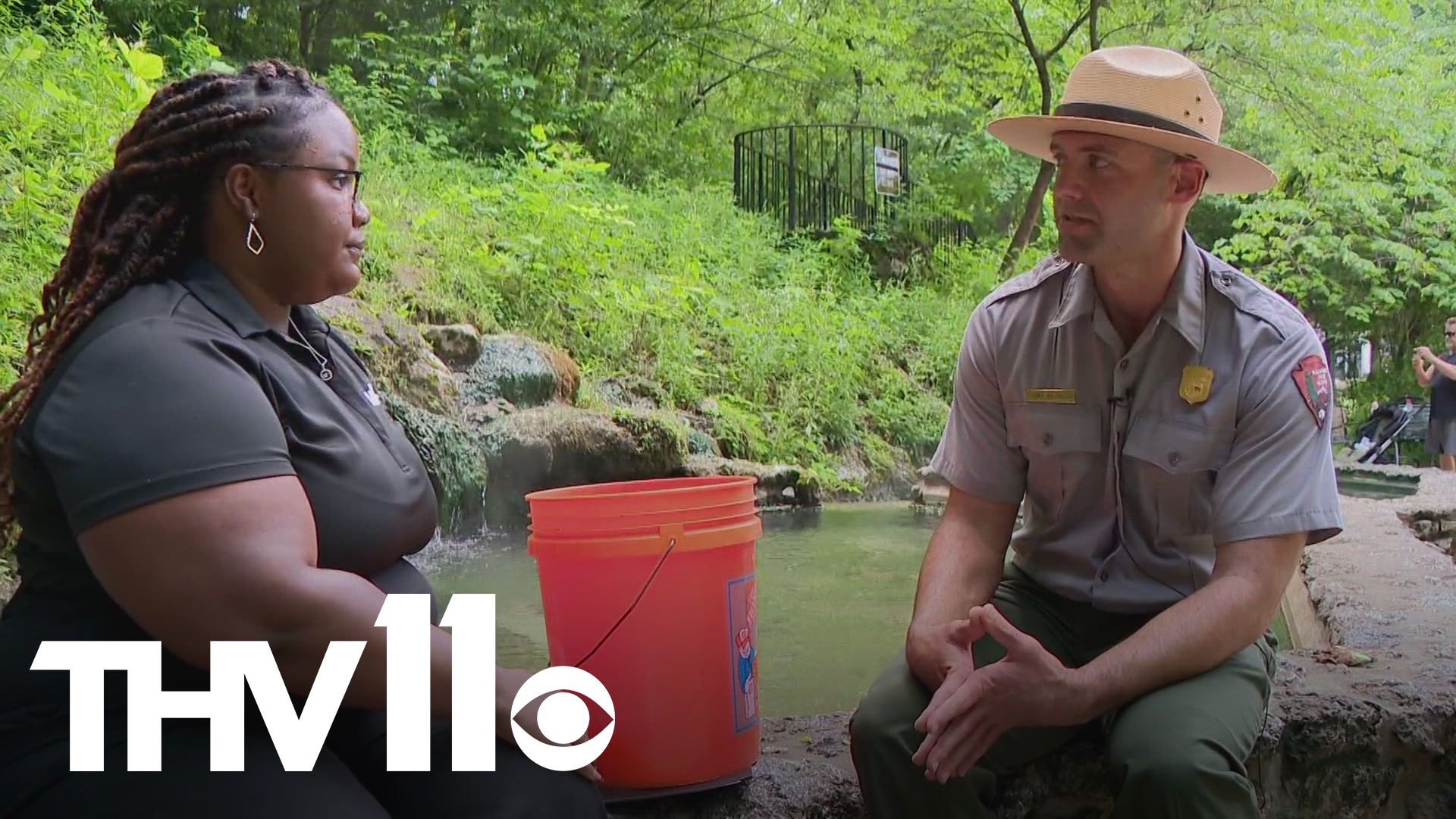HOT SPRINGS, Ark. — The hot springs at Hot Springs National Park are just one of the many attractions unique to Arkansas, but have you ever wondered, 'How did they get here?'
Dr. Chace Holzheuser uncapped one of the many hot springs at Arkansas's only national park. Those covers help keep the famous water clean and visitors safe.
"There's a lot of people who think that the springs are heated by volcanic activity," Holzheuser said. "It's as if there's a large magma chamber underneath us, kind of like what people think of with the hot springs in Yellowstone or some of the other thermal springs in the Rocky Mountains, and that's absolutely untrue."
Instead, bubbling deep beneath the surface at a scorching 150 degrees is a piece of Arkansas history that predates much of recorded history.
"The formation of our springs actually goes back several hundreds of millions of years," Holzheuser said.
According to Holzheuser, the continents started coming together 350 million years ago, creating the Ouachita mountain formation.
"That is the mountain-producing event that laid down all of these different types of sediment and created the unique geology underneath the surface that allowed these springs to happen," Holzheuser said.
These unique rocks and their formations at the hot springs allow the water to seep deep beneath the Earth's surface—up to 8,000 feet down.
"Once you start getting that low, you start getting closer and closer to the mantle," Holzheuser said. "Then, you experience what's called a 'geothermal gradient.' It's the Earth's natural tendency to get hotter as you go deeper into the soil."
While that trip deep into the Earth can last more than 4,000 years, the journey back up is much faster, taking only about two years. It may not seem that fast, but it's quick enough that very little heat is lost as the water races back to the surface.
"The water reaches an average of about 150 degrees Fahrenheit at the bottom," Holzheuser said. "By the time it comes up to the surface, it's only lost about five degrees Fahrenheit, so it comes up about 145 to 143 degrees Fahrenheit."
This water is too hot for bathing or drinking, so many of the springs remain capped off for safety. However, a select few are left open for visitors to experience the magic of the springs. The rest of the heated water must travel elsewhere.
"After we pipe the water from the springs to our collection tank, we pipe it to this cooling tower," Holzheuser said. "This works very similar to the radiator on your car, where it's just cooled air. We bring it down to about 100 degrees Fahrenheit with this cooling station, and from there, we pipe it out to the rest of the stations."
Shortly after, it makes its way to the bathhouses that helped make the namesake city so famous for one of the hottest attractions in the Natural State.

